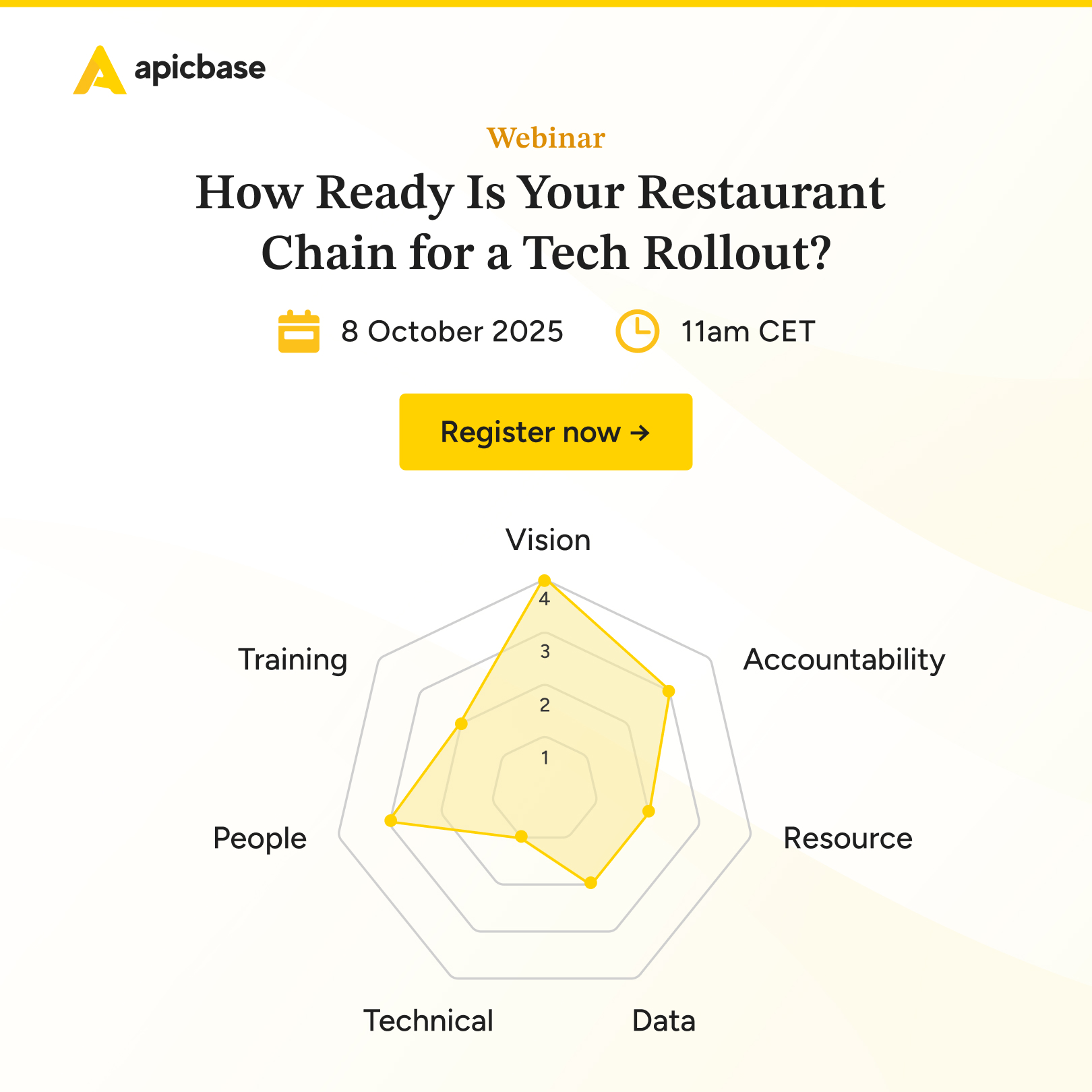When restaurant companies start the buying process with demos and feature checklists, they often end up digitising flawed workflows instead of improving them.
This is how tech procurement usually goes: build a longlist → schedule demos → compare features → request pricing → make a decision.
It’s clean, structured, and helps align the buying committee.
On paper, it works.
And for tools like payroll software, it does work. You’re not reinventing how people get paid: the use cases are clear, workflows are standardised, and comparison is straightforward. So yes, line up the features, check the boxes, and choose the best fit.
But this logic starts to fall apart once you move into core operations, like inventory, recipes, and procurement.
Why an Early Demo Takes You Backwards

Back-of-house processes don’t come from a playbook. They’ve evolved over time, shaped by habits, local workarounds, and operational quirks that often only make sense to the people who created them years ago.
The “system” often isn’t a system at all; it’s a mix of spreadsheets, handwritten notes, and institutional memory.
The instinct is to look for a tool that mirrors what you already do.
So when restaurant companies look for new tech, the instinct is to look for something that mirrors what they already do, just with nicer dashboards.
It’s like hiring an architect to rebuild your house using the same floor plan, just with fewer leaks. Maybe the real issue isn’t the damp. Maybe the walls were never in the right place to begin with.
The Demo Trap: When Familiar Problems Block Better Solutions

That’s not to say restaurants are doing anything wrong. Quite the opposite, the bigger picture is solid. They want to:
- Improve operational efficiency;
- Gain better control over costs;
- Grow sustainably;
- Upgrade the customer experience.
But when the first step in the purchasing process is a demo, that bigger picture tends to get lost. The focus shifts from where the business needs to go, to what’s frustrating right now.
Suddenly, every department brings a list of things to fix:
- “I need to export this to Excel.”
- “Can I email recipes to stores?”
- “Let’s keep these SKUs in a separate database.”
These are all valid requests. But they’re based on current habits, not future improvements. They reflect how things work today, not how they should work, or could work better.
And here’s the real risk.
When teams evaluate software based on what they know, they end up rebuilding the same workflows, even if that’s exactly what wasn’t working in the first place.
The result is digitisation without transformation. It’s a common blind spot. And I believe our experience at Apicbase can make a real difference.
Why?
Because Apicbase didn’t appear out of thin air. It is shaped by hundreds of implementations across every corner of foodservice. The best practices, the edge cases, the workflows that actually hold up under pressure—they’re already built into the platform.
But when a checklist drives procurement, that value is easy to miss. Of course, a well-structured RFP is always welcome, but the real opportunity isn’t to digitise what you’ve always done. It’s to question whether those processes still make sense, and to build something better in their place.
Why a Good Demo Comes Later

That’s why the best rollouts I’ve seen didn’t start with a demo. They started with a conversation.
To be honest, we used to lead with demos too. It felt like the right thing to do: show the product and impress the buying committee. But by screen #3, you could tell people had tuned out.
Everyone was just scanning for their thing — the one feature that would fix whatever frustration they had with their current system.
- “Where’s the stock count button?”
- “How do I export order history?”
- “Can I print a recipe?”
Then came the turning point. We were on a call with a large enterprise group from Germany. Halfway through the demo, the CTO jumped in and said:
Look, we trust your software works just fine. But here’s what we’re trying to achieve—and frankly, we think the way we’re working today is getting in the way. Let’s sit down and figure out why. Help us understand what’s broken before you show us how you’d fix it.
They challenged the playbook, and it stuck. Now, before we show a single screen, we start by understanding four things:
- Objectives: What are you trying to achieve as a business?
- Processes: What needs to be improved, simplified, or standardised?
- Friction: Where does the current system fall short?
- Context: What’s unique about your setup? What’s common across locations?
It works better for everyone.
We’re not guessing what you really need. And you’re not sitting through a generic walkthrough. Instead, we’re having a strategic conversation about what would actually move the needle: how your business could run better, with less manual work, more control, and a setup that’s built to scale.
Conclusion: Don’t Let a Checklist Define the Strategy
“Let’s see what the system can do, and then we’ll let you know if it’s a fit.”
Like I said, it sounds like a reasonable way to start the buying process. But when you lead with a demo, you often end up with surface-level alignment. The system might tick the boxes, but it rarely shifts how the business actually works. And once those broken workflows are locked in, they’re notoriously hard to change.
So start by asking better questions:
- Where are we losing time, money, or visibility?
- What’s standing in the way of scale, consistency, or control?
- What does “good” look like 12 months from now?
Get clear on what needs to change — and why. Then bring that clarity into your conversations with tech partners.
Don’t ask them, “What can the system do?”
Ask, “How would your system help us solve this?”
That’s the demo you want.
One that challenges your assumptions, stretches your thinking, and introduces a smarter way of operating, not just a prettier version of what you’re already doing.

Want to see what that kind of demo looks like?
If you’re planning a rollout, let’s talk. We’ll help you map your workflows, uncover inefficiencies, and show how Apicbase supports your bigger goals.



